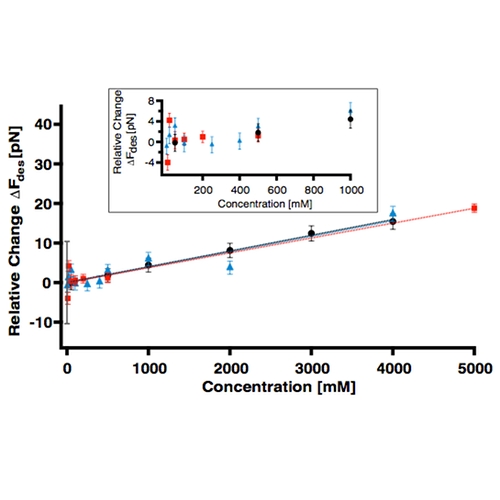Single molecule force measurements delineate salt, pH and surface effects on biopolymer adhesion
01-Jun-2009
Physical Biology, 2009, doi:10.1088/1478-3975/6/2/025004, published on 01.06.2009
Phys. Biol., online article
Phys. Biol., online article
In this paper we probe the influence of surface properties, pH and salt on the adhesion of recombinant spider silk proteins onto solid substrates with single molecule force spectroscopy. A single engineered spider silk protein (monomeric C16 or dimeric (QAQ)8NR3) is covalently bound with one end to an AFM tip, which assures long-time measurements for hours with one and the same protein. The tip with the protein is brought into contact with various substrates at various buffer conditions and then retracted to desorb the protein. We observe a linear dependence of the adhesion force on the concentration of three selected salts (NaCl, NaH2PO4 and NaI) and a Hofmeister series both for anions and cations. As expected, the more hydrophobic C16 shows a higher adhesion force than (QAQ)8NR3, and the adhesion force rises with the hydrophobicity of the substrate. Unexpected is the magnitude of the dependences—we never observe a change of more than 30%, suggesting a surprisingly well-regulated balance between dispersive forces, water-structure-induced forces as well as co-solute-induced forces in biopolymer adhesion.











